The New Strehler Sirna: It Shocked Me!
Reinvention is a concept common in literature and the public sphere, where athletes, celebrities, ex-criminals, or divorcee’s shift their entire life to create a new version of themselves. Both tragedy and success can lead to a personal reinvention.
Take Robert Downey Jr. for example, a man literally born into the upper echelon of Hollywood, he was also given a childhood that directly led to his rocky life as a playboy, drug-using, troublemaker that was arrested multiple times and essentially shunned from movies due to being a financial liability.
Yet shortly after his fortieth birthday he completely turned his life and public image on its head and over the next decade become one of the biggest movie stars in the world. Reinventing himself from the wild child into the calm, cool, and collected superstar, RDJ is now poised to be cemented in history as one of the all-time greats (and one with fantastic taste in watches).
It can be just the same in the business world, some companies pivoted and reinvented themselves after an industry died, their domination faltered, or technology shifted, and it pursued other channels to survive.
Electronics company Nokia formed in 1871 with the construction of a paper mill in Finland and almost 130 years later was the biggest cell phone manufacturer in the world.
In 1889, Nintendo was founded as a playing card company and 124 years later was the biggest video game console company in the world.
In these cases, reinvention was a combination of following the business and evolving with the times, but sometimes reinvention can be more low-key and simply expanding from one niche to multiples, continuing to work concurrently in both domains.
That brings me to Andreas Strehler, the genius watchmaker behind the eponymous brand as well as numerous creations and developments for the wider watch industry.
But never one to settle, he is now the man behind a new watch brand, ‘Strehler’, which is technically a separate entity from the ultra-high-end Andreas Strehler brand.
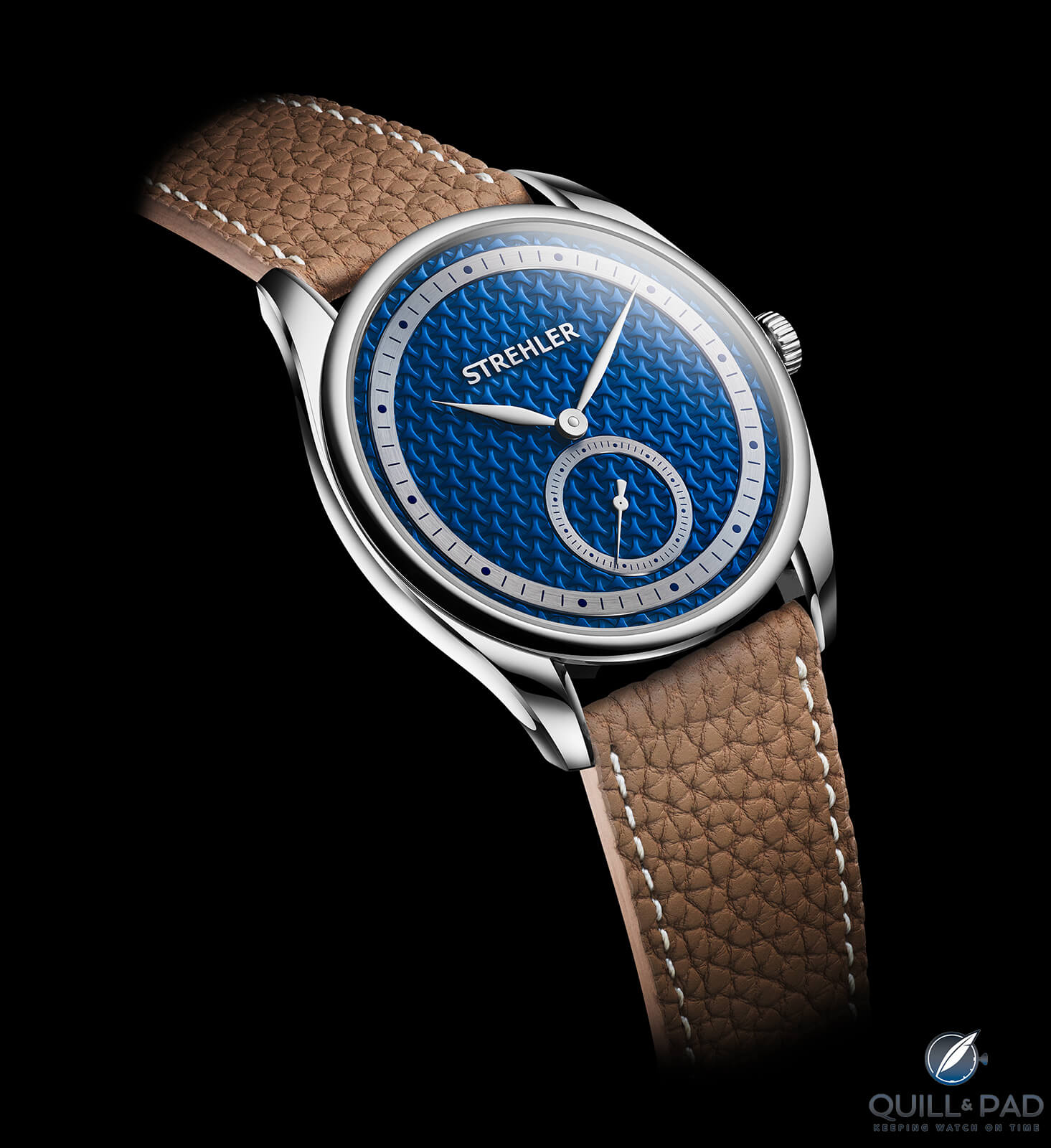
Strehler Sirna
The new venture debuted with the Sirna, a “simple” three-handed watch that seeks a wider audience while maintaining the quality found in all the work Andreas Strehler engages in.
————————————————————————————
————————————————————————————
Strehler Sirna
Andreas Strehler is among good company in the annuls of modern watchmaking as a man that founded his own brand alongside a company that produces components, movements, and inventions for the whole industry.
Strehler approaches watchmaking not just as the lone man sitting at a bench for months producing laboriously esoteric handmade watches (not that there is anything wrong with that), but as a creator and director of value in all its forms.
His company, UhrTeil AG, has provided a foundation for many brands to bring awesome creations to the watch loving public, as well as being a testing ground for his own ideas.
With the launch of Strehler (not to be confused with his original brand, Andreas Strehler), a new path for the watchmaker has emerged focusing on simpler concepts that a mechanical collection can be built from.
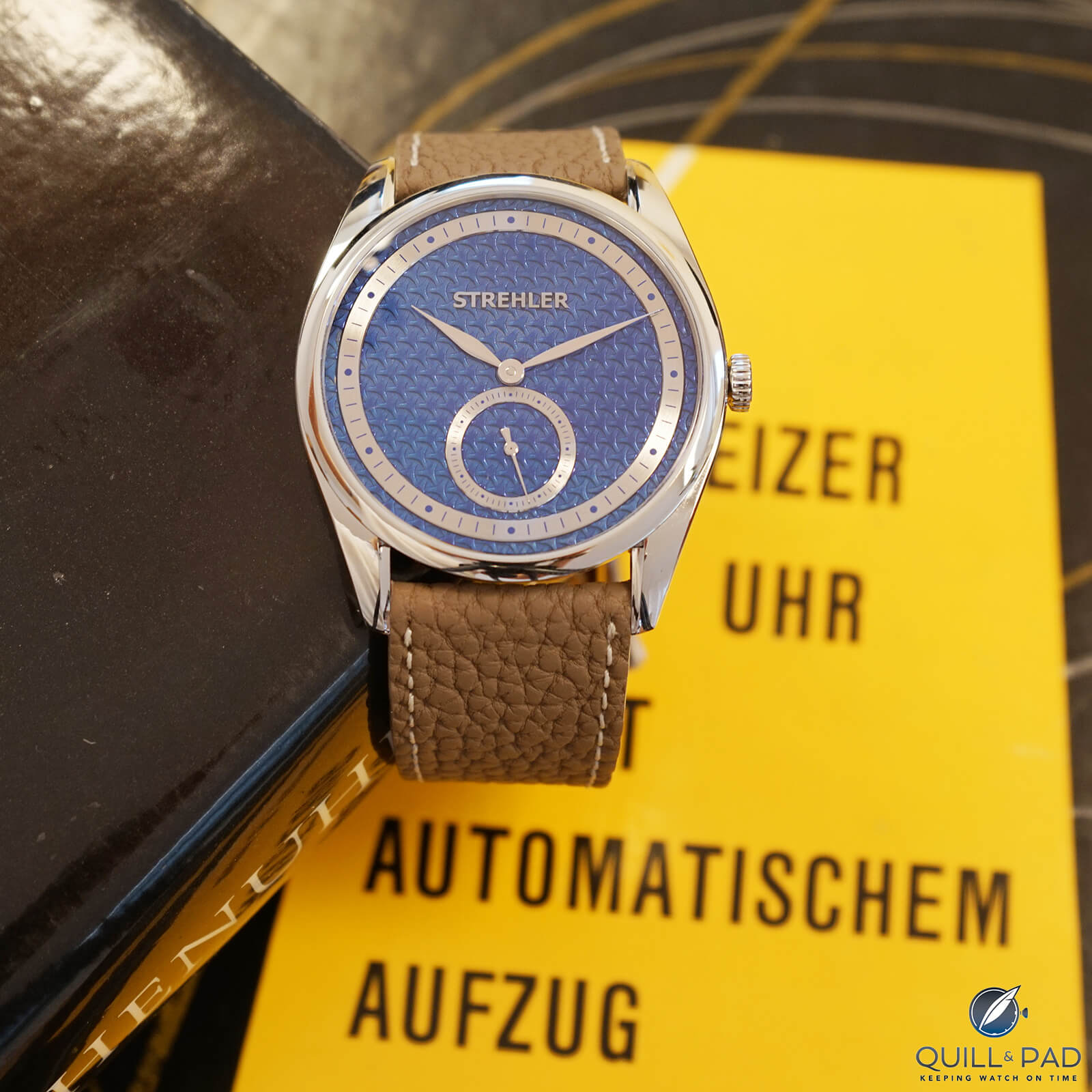
Strehler Sirna
The Strehler Sirna is first off the block, a time-only watch with an off-center seconds sub dial, clean chapter rings, and a laser engraved and hand finished dial that adds visual emphasis while still remaining subdued.
The Sirna is also the first watch bearing Strehler’s name to be automatic, perfect for an everyday watch the Sirna was intended to be.
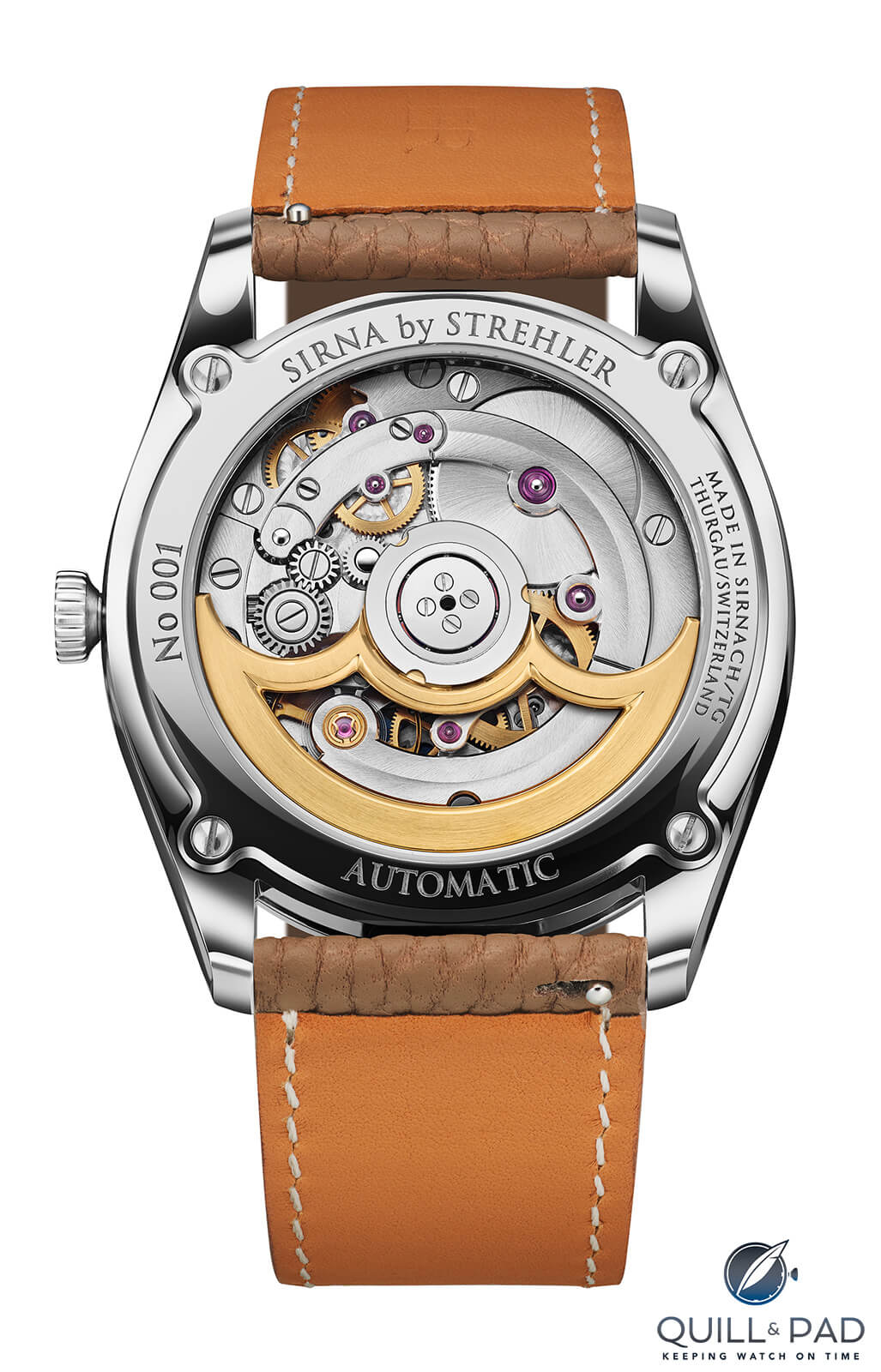
Back of the Strehler Sirna
Sporting a truly in-house movement, a nearly ultra-thin case, and an aesthetic designed in collaboration with horological Van Gogh reincarnation, Eric Giroud, it’s easy to get captured by this new venture.
The SA-30 movement is made in the same UhrTeil AG workshops as every other amazing piece to come from Andreas Strehler, and was designed from the ground up to allow for high end finishing and a clean look while working more like a modern manufacturer instead of the delicate and time-consuming independent atelier of the Andreas Strehler brand.
Instead of producing the Sirna in batches of one or two at a time to fulfill a custom order, it can be built using the same high-end techniques while taking advantage of batch production (nothing groundbreaking but a clear departure from the primary brand).
But if the Strehler Sirna is just another time-only watch, what makes it so special? It’s all in the details.
————————————————————————————
————————————————————————————
Design details
First, we look to the clear visual difference between Andreas Strehler and the new Strehler brand. The former was almost entirely based on two distinct visual concepts, the papillon (butterfly) and his take on the quasi-cushion shaped case, which he also calls the Papillon case.
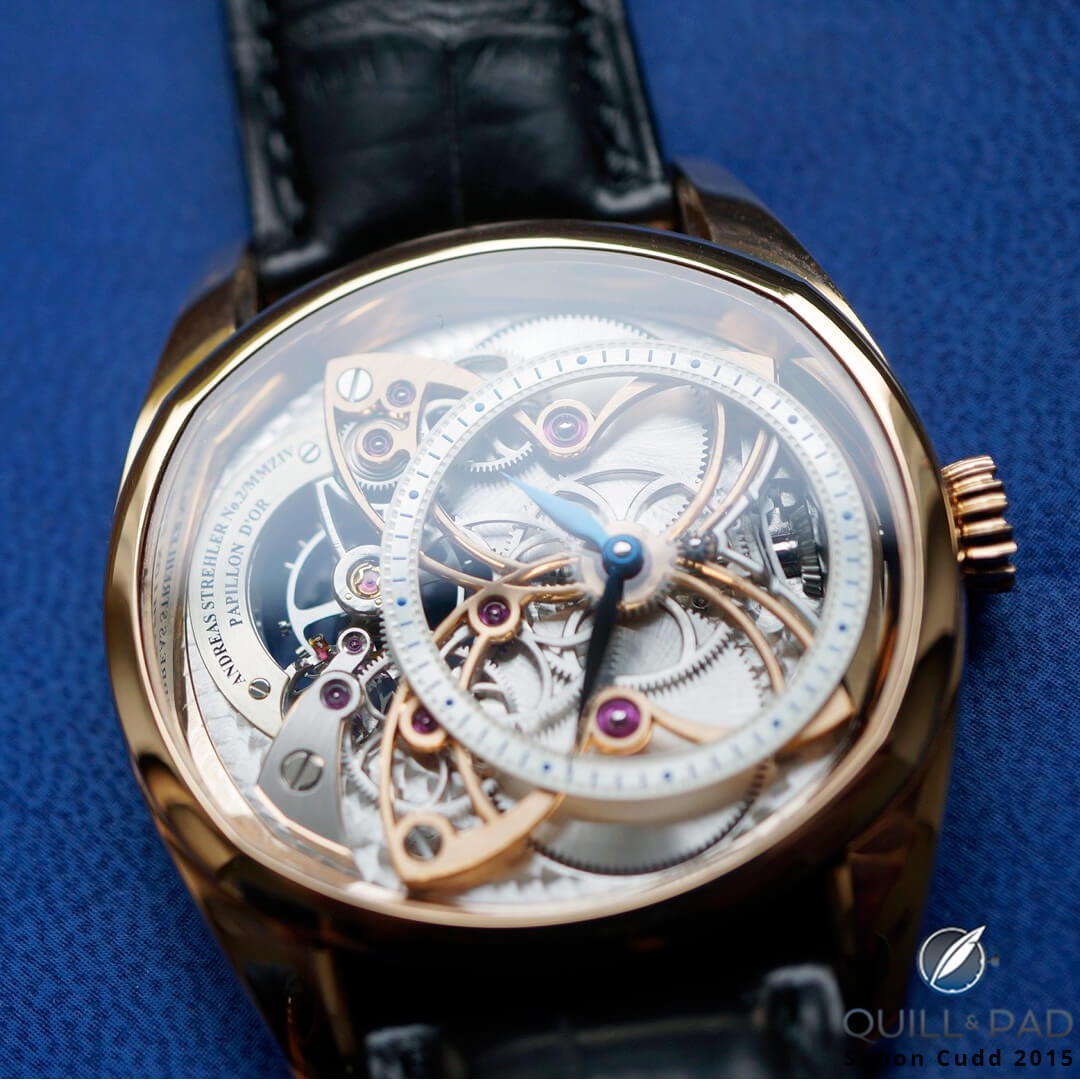
Andreas Strehler Papillon with gold bridge
In the first instance, the butterfly appeared in the shape of his bridges and thematically in the wheel spokes, creating an obvious flow to the movements (more on that later).
Next, the Papillon case was a combination of both feminine and masculine aesthetics, gently rounded shapes meeting edges, and the Strehler Sirna departs from this in one key way.
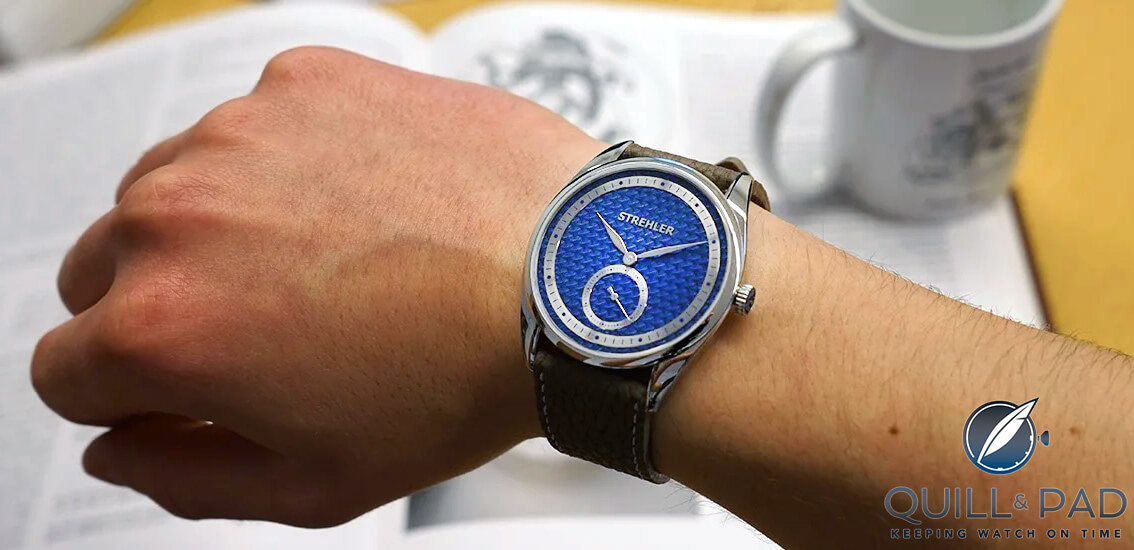
Strehler Sirna on the wrist
Classic proportions for a simple case are the foundation of the Sirna. And while visually it is clear that the case differs from the Andreas Strehler Papillon case, the differences are more like a simplification of style.
The bezel that was a set of four arches meeting with subtle but clear corners is now a perfect circle, much more traditional (and easier to manufacture to high standards).
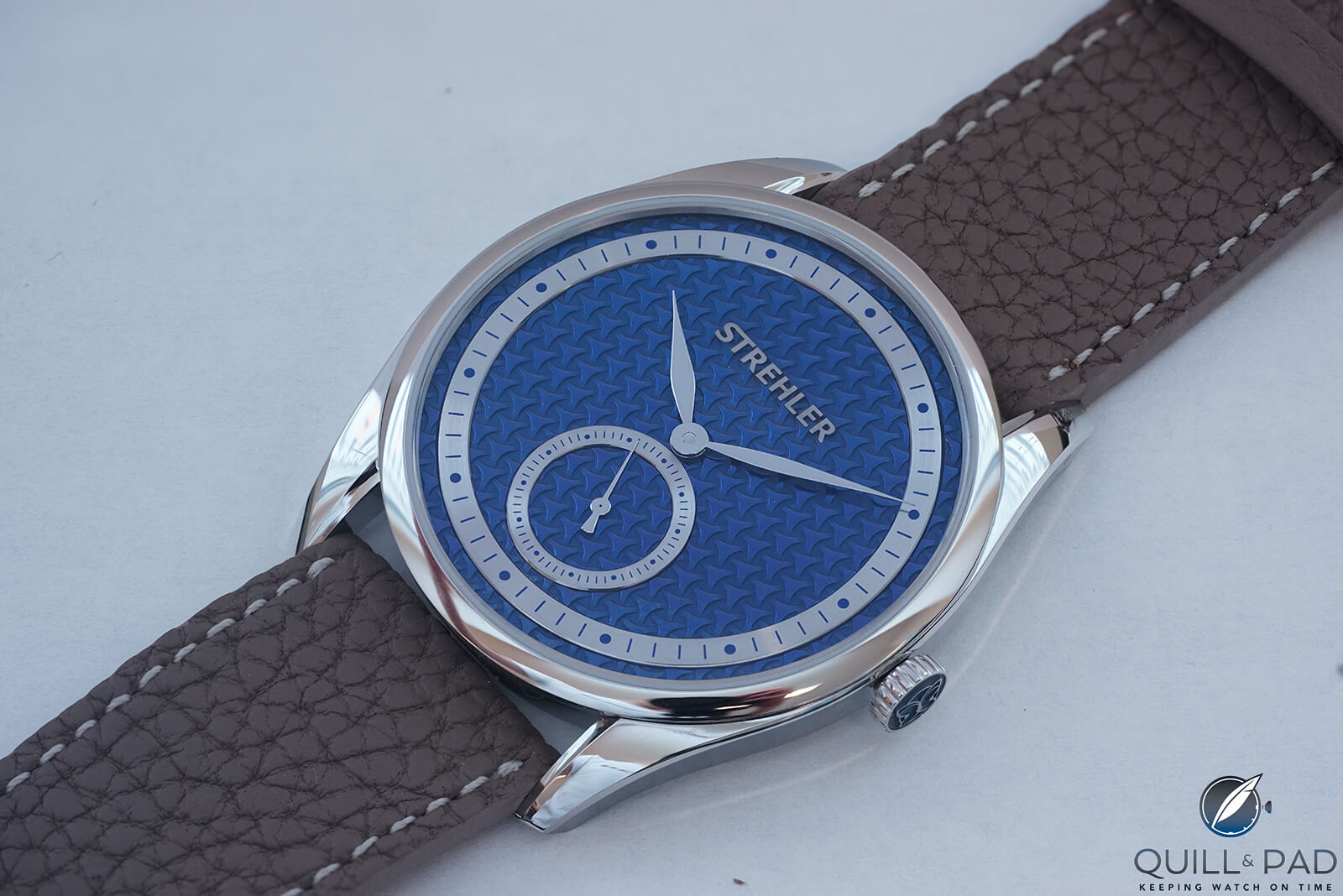
Strehler Sirna
The lugs and case middle, however, still appear to share a lot of geometric similarities.
There is a certain loss of sensual curves, but proportions feel very similar and the inner chamfer on the lugs hearkens back to a similar feature on the case lugs for his previous pieces.
The crown is somewhat similar in profile to the Andreas Strehler crown but lacks the deeply concaved fluted face which is replaced by the classic Strehler papillon bridge logo design (showing that they come from the same Strehler Horological Universe (SHU).
This case is also thinner than all of the Andreas Strehler watches by 1.5 millimeters, making the Sirna effectively qualify as an ultra-thin watch depending on whose definition you go by.
————————————————————————————
————————————————————————————
Looking towards the dial it is obvious that the aesthetic is sort of a modernist interpretation of a typical Andreas Strehler dial. The chapter rings bear the same hash marks and circular hour/5-minute markers, only this time they are all pad printed blue instead of inserts being applied, as well as being centered on the dial instead of offset like his previous works.
That design is repeated for the small seconds dial even while the hands are simply non-blued versions of the typical Strehler hands, keeping continuity.
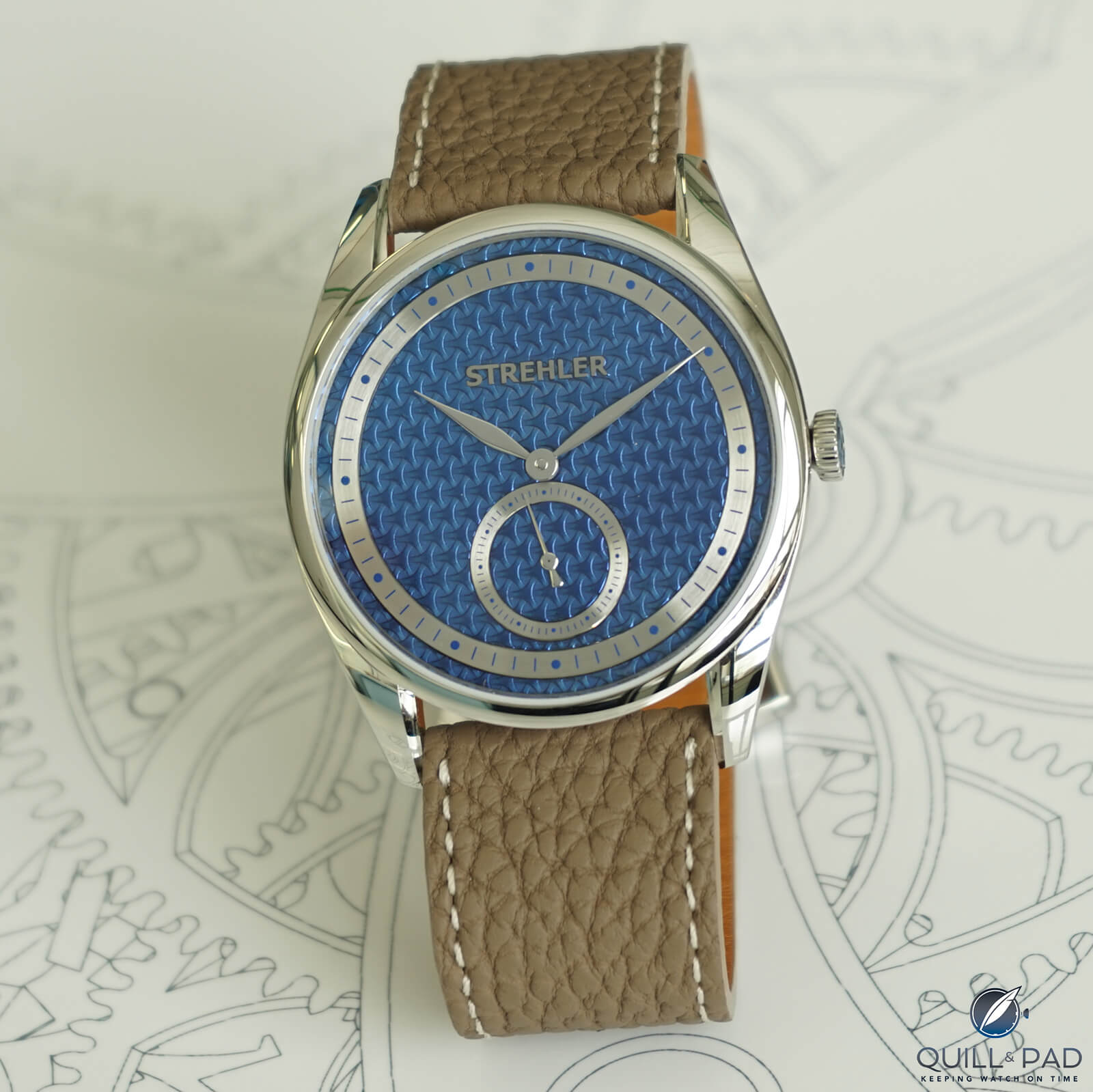
Strehler Sirna
The classic guilloche has made way for a laser-engraved 3D pattern, something akin to guilloche but that would likely be impossible to achieve using the historical method. Each shape is then polished by hand to provide a high-level finish to a modern technique.
Lastly, the logo applied to the dial departs from the Andreas Strehler brand in two primary forms. One is the obvious lack of the first name Andreas, since that is not part of the name of this brand. Instead, it is simply the name Strehler, in all capital san serif letters with the S and T combining into one merged shape.
The Andreas Strehler logo was always serif, though varying on different pieces between all capitals and the more typical combination of both cases.
There also weren’t any graphical elements applied to the name such as combining any letters, this is a much more modern typographical practice for wordmarks (logos consisting of just words).
That sends a clear message that while this brand and collection comes from the same Strehler Horological Universe it does not seek to be the same but less expensive, instead seeking to have a more modern slant.
Mechanical Details
Inside the case is where we also find a much more modern slant, or more accurately, a much more consumer-based direction.
An automatic movement is already something that many will claim makes a watch less haute horology and more mass produced, though I have written why I don’t necessarily agree (see Automatic Watches Are For Watch Enthusiasts: A Counterpoint Here’s Why).
Still, making a watch automatic does make it much better suited for everyday wear, especially if you want consistency from your timepiece.
————————————————————————————
————————————————————————————
Designed, prototyped, and built entirely in-house, the caliber SA-30 is the first “production” movement from Andreas Strehler (the man) that wasn’t intended for some other small independent client brand.
You could argue that all of his movements, since they were produced in-house for many individual timepieces, are production movements, but everything produced before was made on request and the workflow was much more “small batch.”
With the SA-30, Strehler and UhrTeil AG will produce it more like a production piece, fabricating a big run of parts in concurrent batches so that all parts (including the necessary extras) are on hand and ready to go when needed.
It may seem like this is not much different than before, especially when Strehler says that production capacity will still be limited to 30-50 watches every year but making 5 of something and making 50 of something does open a lot of doors for efficiency, especially with material waste and cost savings.
In-house advantages
It is finished to a high degree with all the same haute horology finishes, even including hand polished internal angles on the bevels, but with movement architecture that is much more pragmatic instead of artistic, the difficulty can be engineered out where possible.
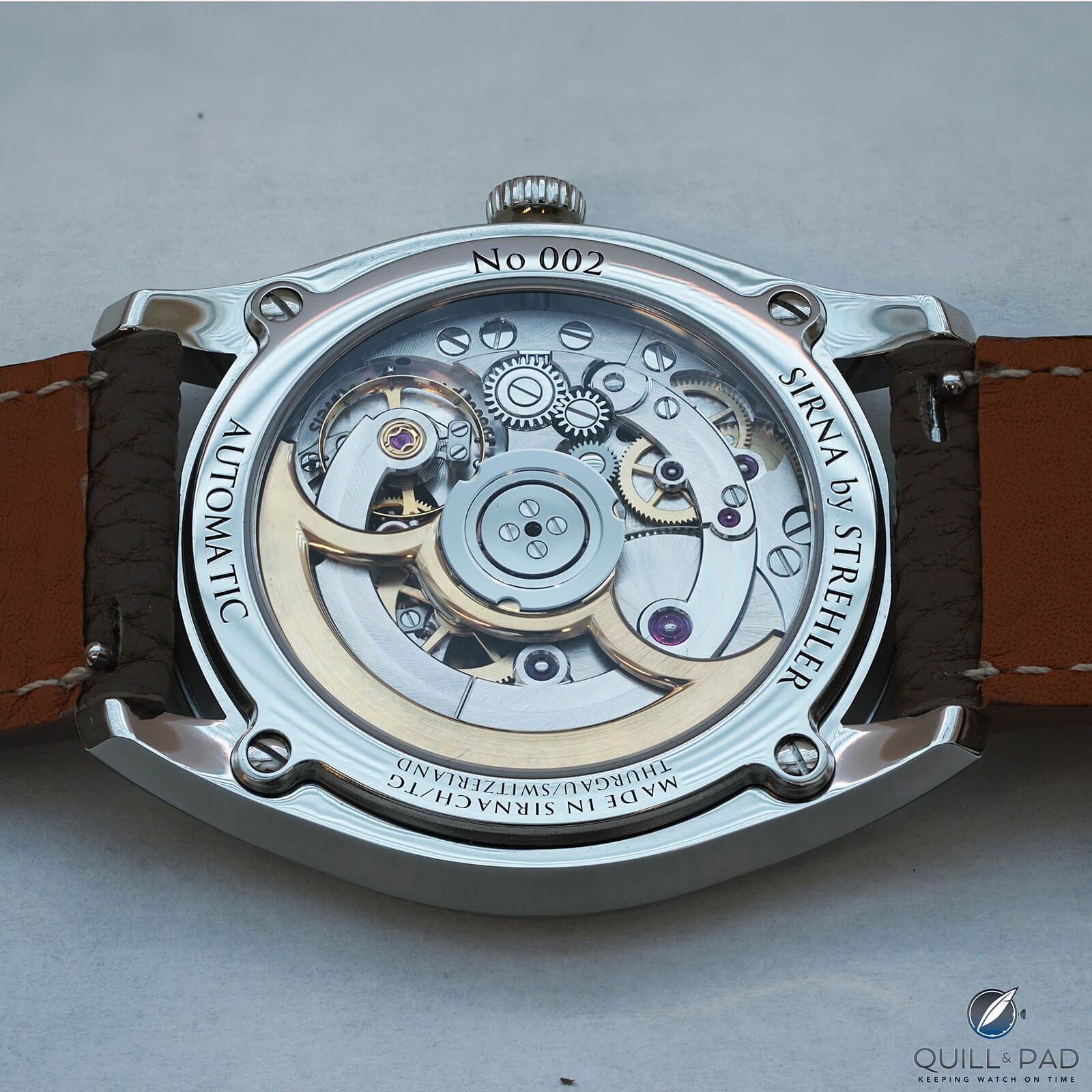
In-house automatic movement of the Strehler Sirna
This turns a beautifully undulating butterfly bridge into a much more straightforward set of simple, arched bridges.
The jewel seats protrude from said bridges and require careful hand beveling and polishing, but even those processes can be improved when decorating 20, 30, 40 at a time versus just a few.
Great care is still taken with the movement and its decoration, something obvious in the automatic rotor and its deep polished bevels with dramatic internal corners. Yet the more impressive feat is something easily overlooked, the ball bearings supporting the rotor itself.
This entire assembly is also made in-house, meaning that Strehler and UhrTeil AG are one of the very few watchmakers in the entire industry capable of producing this extremely niche and tight tolerance component.
Is this necessary? No, clearly these components can be purchased externally, but when designing a mechanism the rule of thumb is to design around the parts you have to outsource, and that provides your constraints.
————————————————————————————
————————————————————————————
If you have to purchase a ball bearing and are given the limits of the various manufacturers, then this defines what you can build, but when you can change the parameters based on another, more important aspect of the watch, this provides more creative freedom.
Now this need for engineering freedom may not actually apply in this scenario but it gives a good sense of what Strehler and UhrTeil AG can do by being in control of their own production, and the Sirna is a great example of putting your capabilities to work to create quality engineering.
The economies of scale still won’t apply too much here as 30-50 pieces a year is still a very small production, but it is a way for Andreas Strehler to take everything he has built and open a new avenue for collectors wanting to appreciate his work and for the folks behind the operation to add value to the industry.
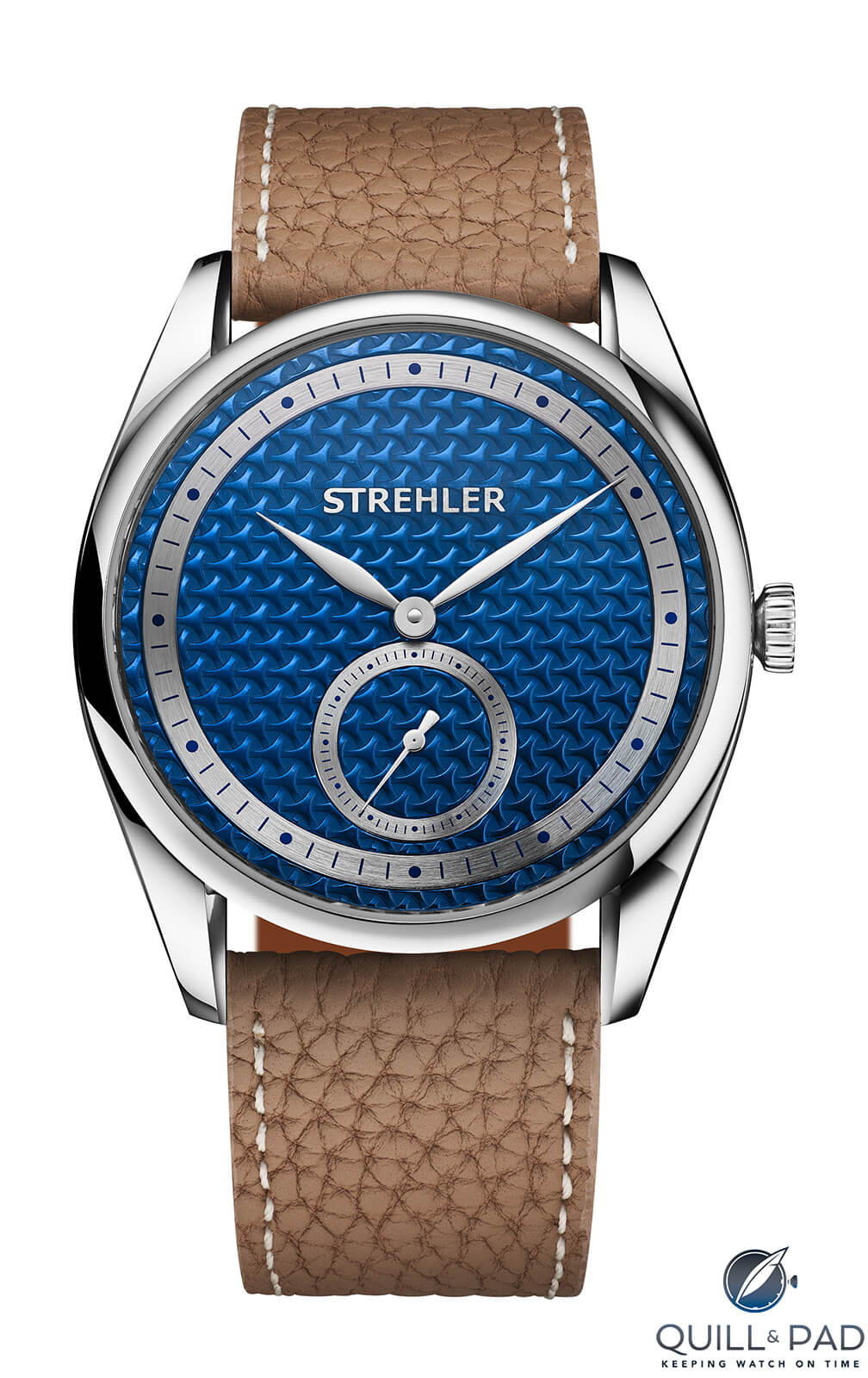
Strehler Sirna
Priced at ‘only’ 20,000 Swiss Francs, the Strehler Sirna is still wildly out of my price range, but it opens accessibility to a wider swath of collectors and broadens the appeal of what Andreas produces.
Plus, it’s only the beginning. The Sirna and the SA-30 provide a base for the fledgling brand to build off with plans for new designs and complications, always with the idea of making a more practical, everyday timepiece with high-quality engineering and interesting aesthetics.
It may not sport a 2-million year moon phase module or a fancy remontoir d’égalité, but it has all the pedigree of Andreas Strehler (and don’t forget Eric Giroud) and is designed to be your everyday watch.
I will always adore his ability to produce mechanical marvels, but we still need a watch to wear everyday to the office and the Strehler Sirna is a fantastic option from one of the best watchmakers in the industry.
We’ll keep an eye out for the next step from this new venture, it’s sure to be a treat.
But just so you all don’t get hungry, let’s break this one down!
- Wowza Factor * 8.4 The dial is the big attractor for this low key watch, a wild laser-engraved pattern designed by Eric Giroud, it definitely made this journalist say wowza!
- Late Night Lust Appeal * 84 » 823.759m/s2 This watch has strong late night lust appeal simply due to the fact that I could possibly save up and actually own a watch by Strehler!
- M.G.R. * 59 The movement is fairly straightforward for a movement from Andreas Strehler, but knowing it is all in-house, even down to the ball bearings, makes it pretty geeky from a manufacturing standpoint!
- Added-Functionitis * N/A One again we applaud a time only watch for reasons other than wild mechanics, so you can skip the Gotta-HAVE-That cream for today!
- Ouch Outline * 8.4 Scrubbing of aggressively adhered fake tattoos! Halloween means that dressing up comes with a bit of discomfort, and in my case it came with some cheap “gore” tattoos that made me look like I had a run in with Freddy Kreuger or something. Little did I know that these tattoos were going to be very well applied and after a fun day in the office I would end up with raw skin all over my face, neck, and arms from trying to get them off. Still I would gladly do it all over again if it meant the result was the Strehler Sirna on my wrist!
- Mermaid Moment * What a dial, what a deal! Anything new from Andeas Strehler gets me excited, but when I discovered it was a new movement, a new aesthetic, and a whole new brand at a new price point I couldn’t help but start planning the ceremony!
- Awesome Total * 836 Start with the number of components in the movement (194) and multiply by the thickness of said movement in millimeters (4), then add the hours of power reserve (60) for a surprising and refreshing awesome total!
For more information, please https://strehler.watch/the-watch/.
Quick Facts Strehler Sirna
Case: 40 x 8.5 mm, 316L stainless steel
Movement: automatic caliber SA-30, 60-hour power reserve, 21,600 vph/3Hz with free-sprung balance and Strehler Swiss-lever escapement
Functions: Hours, minutes, small seconds
Limitation: Limited by production capacity, 30-50 per year (estimated)
Price: CHF 20,000
You might also enjoy:
The 10 Most Accurate Moon Phase Wristwatches Today, Plus Honorable Mention
Andreas Strehler Trans-Axial Remontoir Tourbillon: Focusing On Precision
Blood Moons, Lunar Tetrads, And The Andreas Strehler Sauterelle À Lune Perpétuelle
Andreas Strehler Sauterelle à Heure Mondiale: Globes Around The Globe

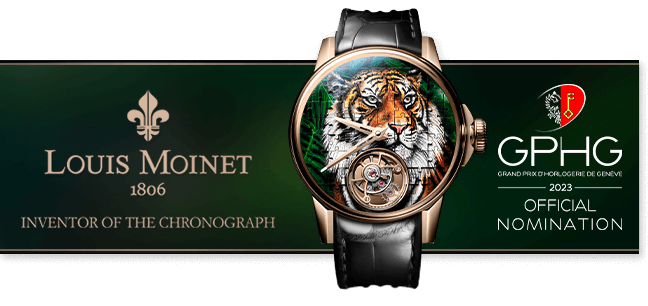
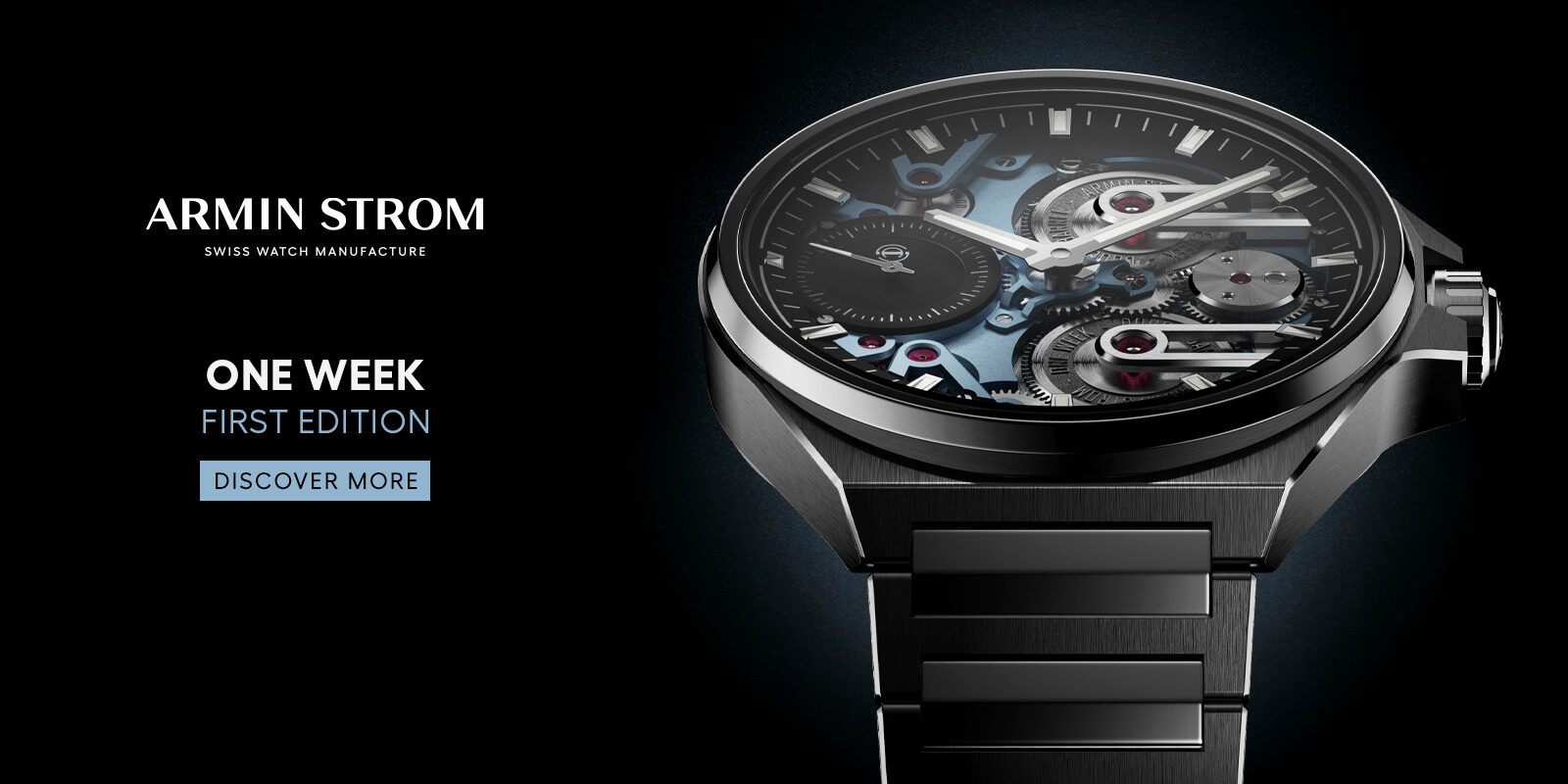
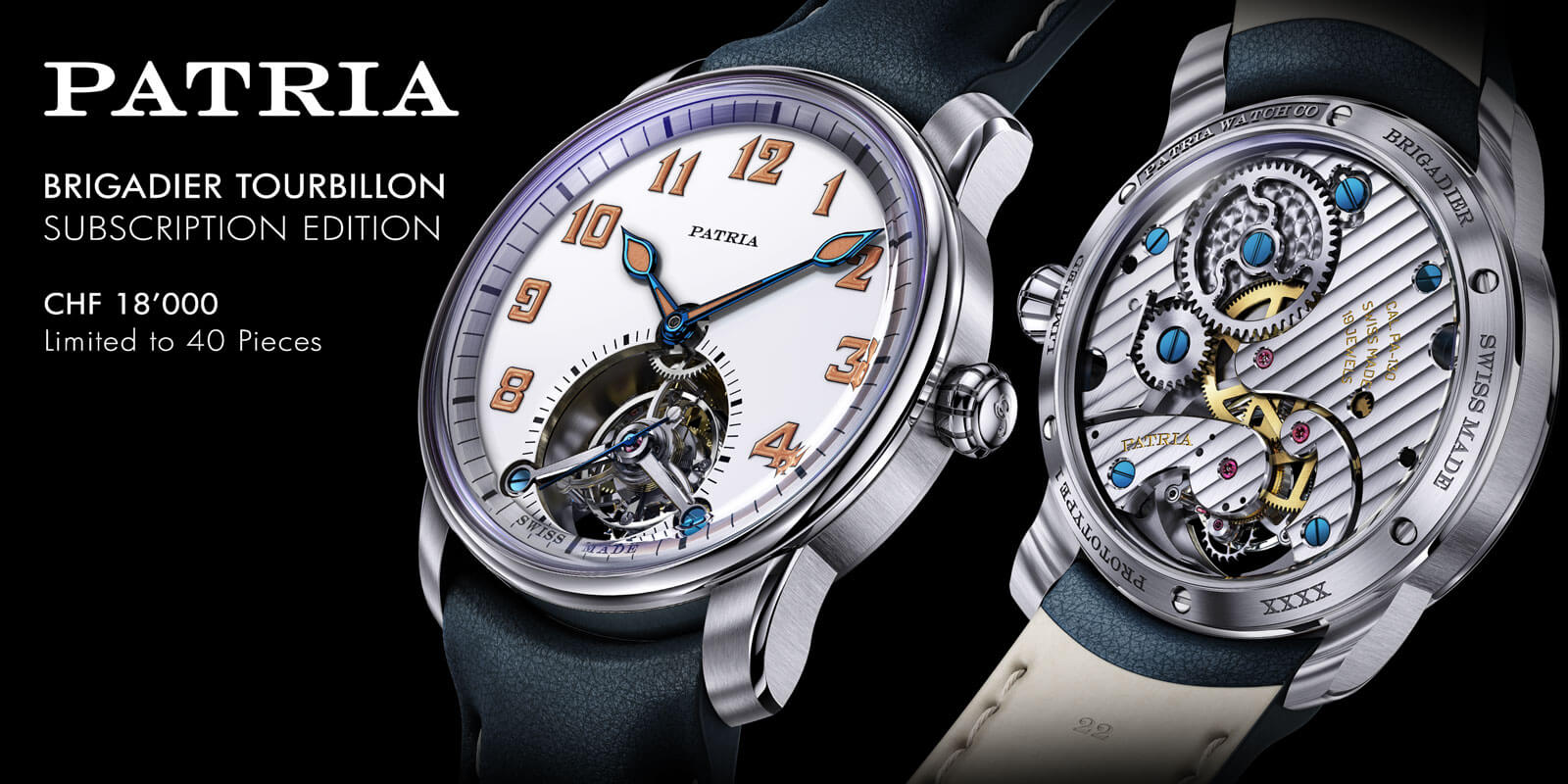
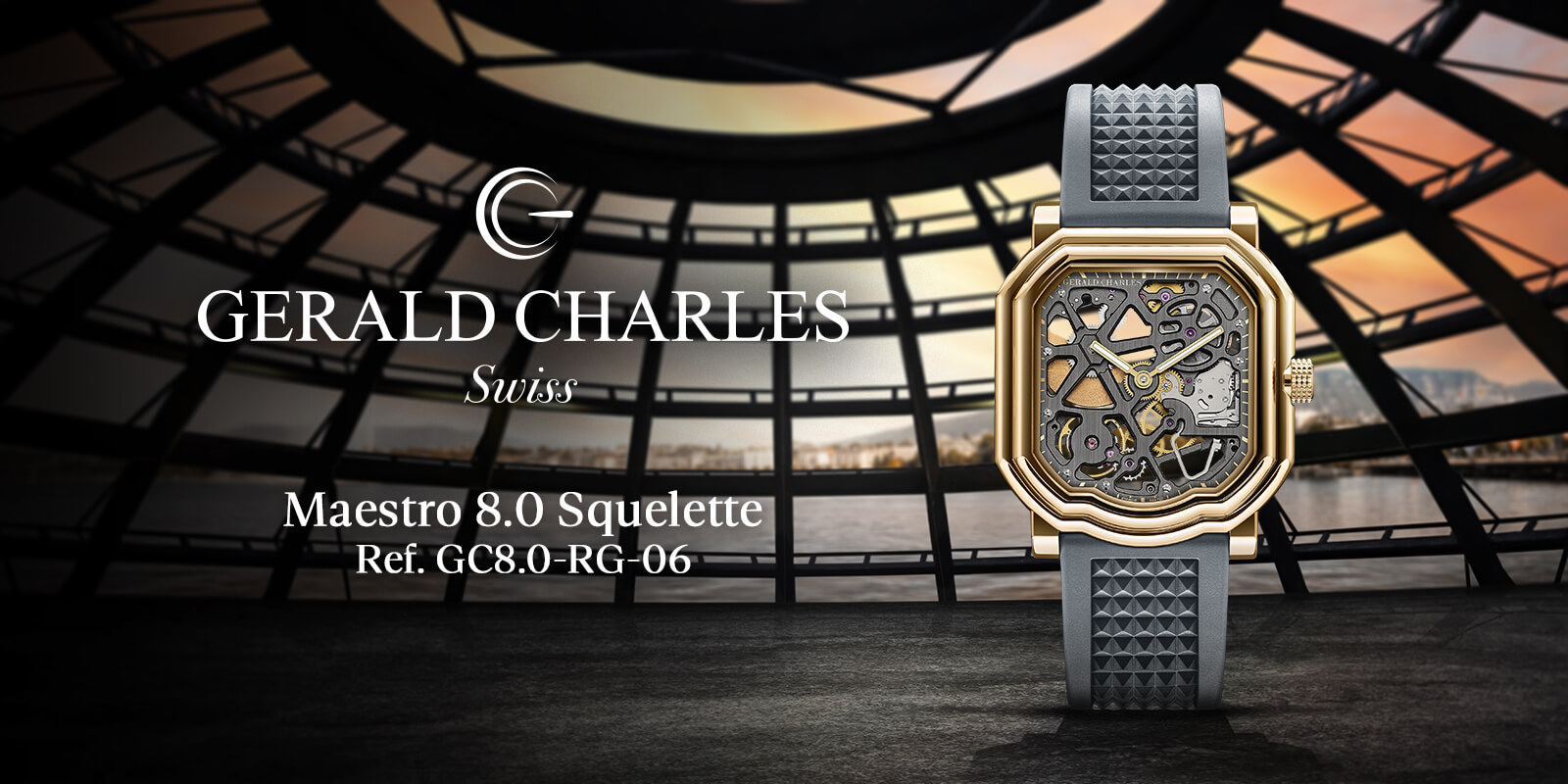


Leave a Reply
Want to join the discussion?Feel free to contribute!